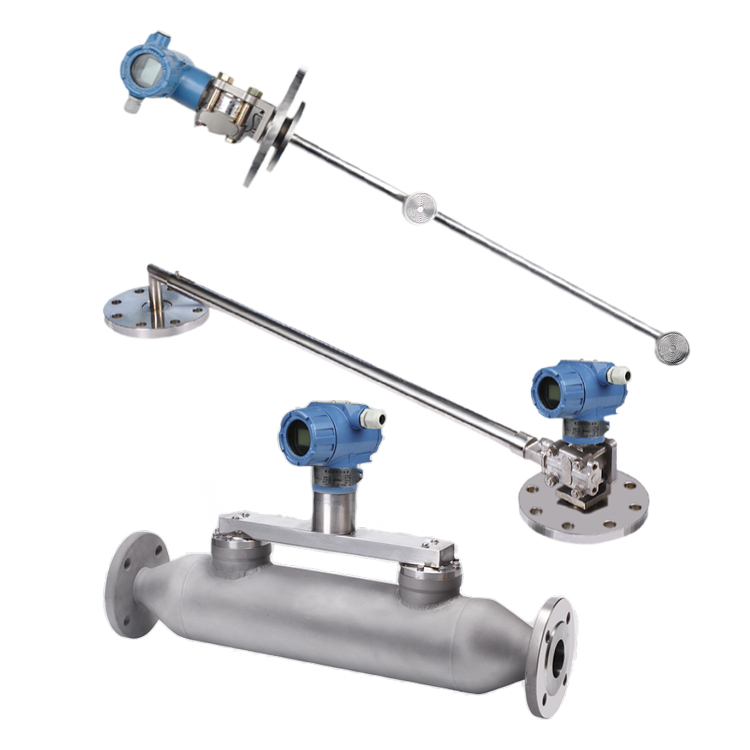Insertion line density meter is a device for continuous online measurement of liquid concentration and density, which can be used directly in industrial production processes. The online density meter adopts the principle of differential pressure density meter, which can calculate the density value according to the differential pressure value of the medium at a certain vertical distance, and automatically perform temperature compensation, with high precision, good reliability, and simple installation and use. Insert the online density meter to generate the corresponding 4-20mA signal according to the concentration and density, which can be remotely calibrated and monitored through digital communication.

Inline Density Meter working principle
The plug-in line density meter is essentially a differential pressure transmitter. How it works: The pressure generated by a liquid column of a certain height is proportional to the density of the liquid. Namely: P=ρgh In the formula: P——the pressure generated by the liquid column of a certain height ρ——the density of the liquid g——the acceleration of gravity h——the height of the liquid column According to the pressure value measured by the pressure instrument, when measuring Under the condition that the acceleration of gravity and the height of the liquid column are known, the density value of the liquid to be measured can be obtained. This product is widely used in food, beverage, pharmaceutical, petroleum, petrochemical, mining and water treatment industries. When the liquid online density meter works, the liquid density is continuously measured online without process interruption. It can be directly used for the control of the production process. Due to the integrated two-wire transmitter structure, no moving parts are easy to install and use, and maintenance is simple.
Inline Density Meter installation attentions
1. Handle with care to avoid touching or squeezing the pressure-sensitive diaphragm.
2. The liquid level of the measured medium must exceed the two pressure-sensitive diaphragm positions.
3. It must be installed vertically and cannot be inclined more than 5 degrees.
4. During measurement, there should be no thick sedimentary layer in the tank, so as not to affect the measurement.
5. When the conventional density meter is in use, avoid contact with the corrosive or overheated medium to be measured.
6. The measured medium is not allowed to freeze, otherwise the sensing element will be damaged, resulting in damage to the sensing element of the density meter.
7. It should be installed as far as possible in a place where temperature steps and temperature changes are small, and there is no shock and vibration to ensure the accuracy of the measured value.




